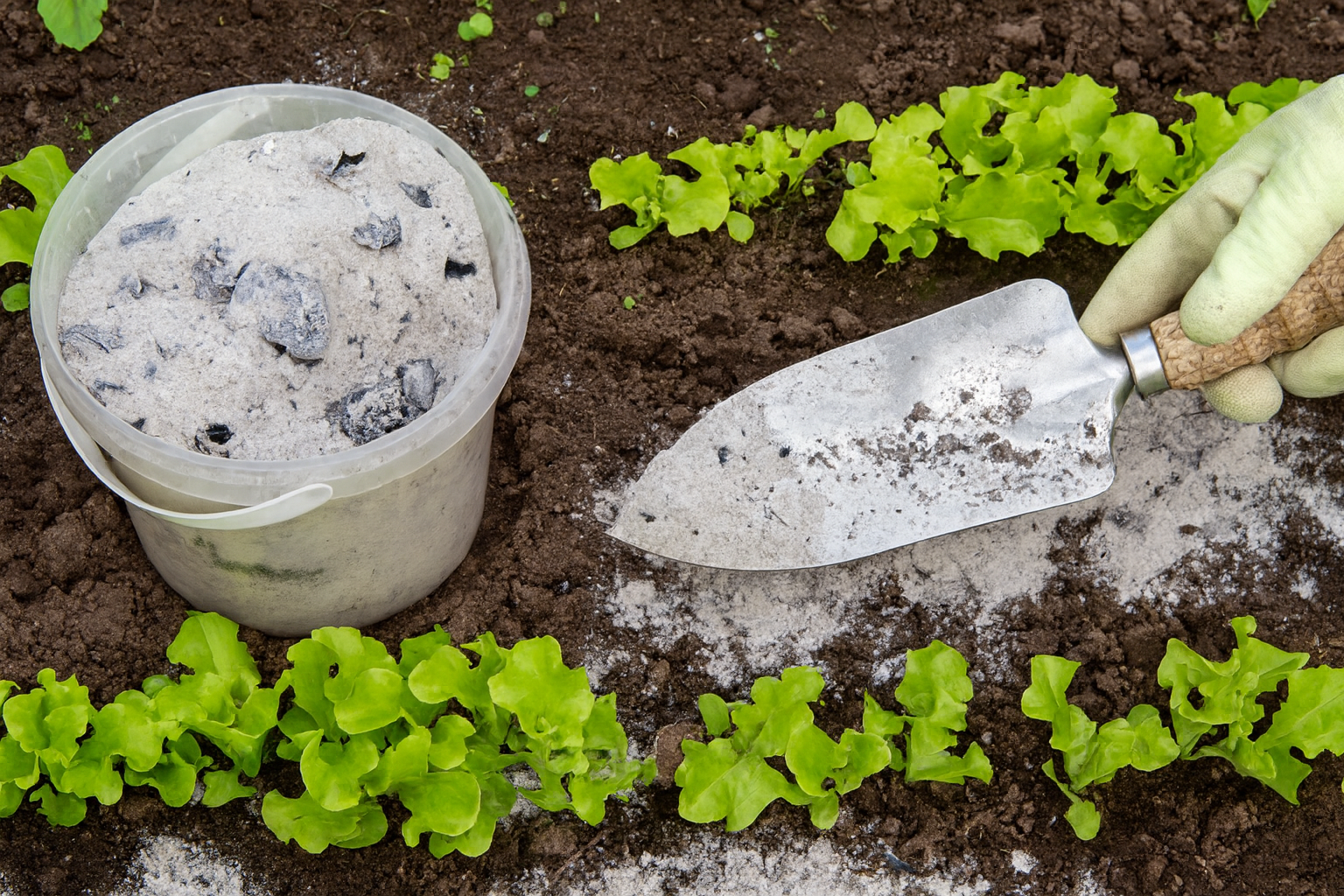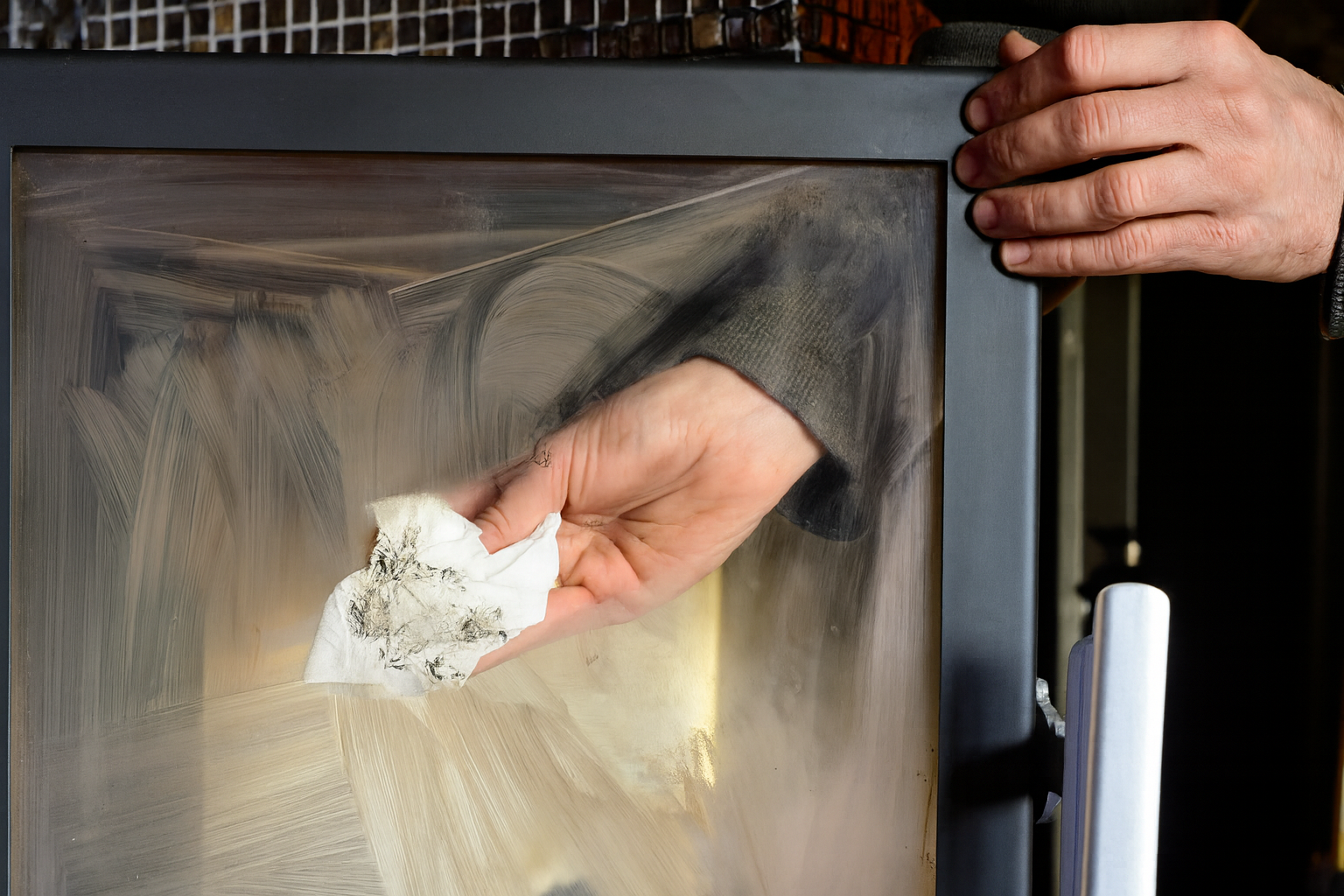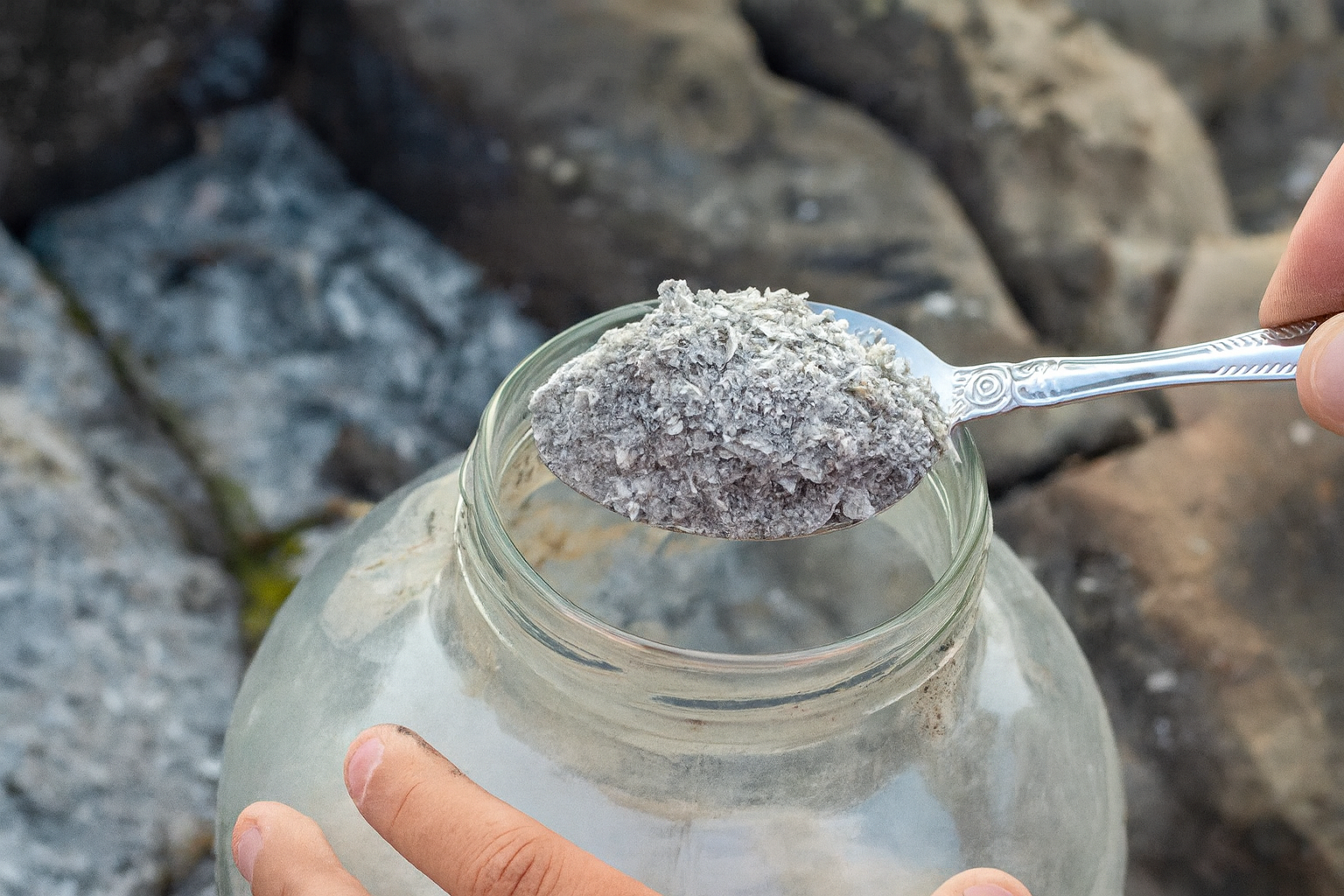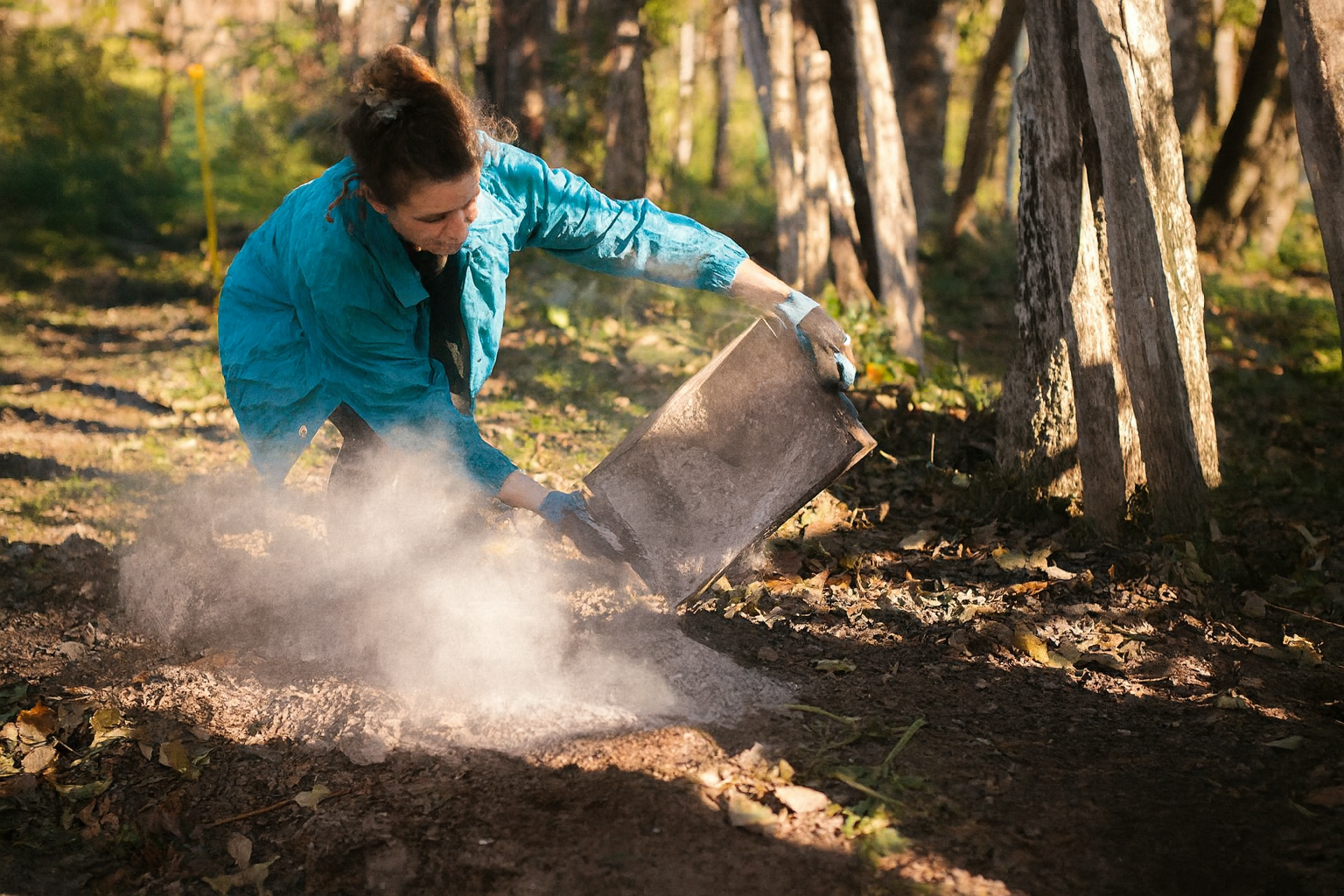A crackling fire, warm hands, twinkling stars – few things are as cozy as an evening by the fire. But when the flames have gone out, an inconspicuous residue remains: gray wood ash. Many people simply sweep it away without realizing that it is a true multi-talent of nature. Wood ash is rich in minerals, versatile and has been used for centuries in gardens, households and crafts. In this guide, you will find out how you can reuse fireplace ash in a practical, sustainable and environmentally friendly way. Let’s discover together why this “waste” is actually a treasure.

1 🌱 The secret power of wood ash in the garden
Wood ash contains an impressive variety of nutrients and minerals that plants love. Even in the past, farmers used it to improve soils and strengthen plants. The most important ingredients are potassium, calcium, magnesium and various trace elements – a natural fertilizer mixture that costs nothing.
- Potassium (potash) – improves water regulation in plant cells, increases frost resistance and promotes lush flowering and fruit formation. Roses, tomatoes and fruit trees in particular benefit from this.
- Calcium – neutralizes acidic soils and improves their structure. Ideal for lawns and vegetable patches that have received too much rain or acidic precipitation.
- Magnesium – is central to the formation of chlorophyll. A deficiency often manifests itself in pale or yellowish leaves – wood ash can help here.
- Trace elements – zinc, boron, iron and manganese promote root formation, plant defenses and flower formation. A thin layer of ash is completely sufficient.
- Important note – only use ash from untreated, natural wood. Lacquered, glued or painted wood contains harmful substances that can damage plants and soil.
Dosing tip: About a handful of ash per square meter is sufficient. Too much can make the soil alkaline and damage sensitive plants. It is best to work it in in spring or fall when the soil is moist.

2 🌿 Practical applications in the garden
- Fertilizing the vegetable garden – Root vegetables such as carrots, onions and beet in particular benefit from wood ash, as they love nutrient-rich, loose soil.
- Slug defense – A thin layer of ash around beds acts as a natural barrier, as slugs avoid dry, alkaline surfaces. However, it must be renewed after rain.
- Compost booster – A pinch of ash accelerates composting as it neutralizes odours and stabilizes the pH value. But: no more than 2 % of the total amount of compost!
- Lawn care – Sprinkled thinly over the lawn in spring, ash encourages growth and reduces moss formation.
- Tree care – A little ash worked in around fruit trees or shrubs improves fruit quality and strengthens the roots.

3 🧽 Wood ash as a natural household cleaner
Ash has been used as a cleaning agent since the Middle Ages – long before chemical cleaning agents were available. The fine grain acts like a gentle abrasive and removes grease, soot and dirt without scratching.
- Stove and fireplace windows – A damp cloth with a little ash replaces glass cleaner. Soot disappears immediately and the glass shines clear again.
- Pans and grill grates – Burnt-on residue? Simply mix with ash and water to form a paste and rub off with a cloth or sponge.
- Oil stains on driveways – sprinkle ash on the stain, leave for a few hours, then sweep off – the oil will be absorbed.
- Cleaning camping utensils – If no washing-up liquid is available, ash acts as a natural scouring agent, ideal for outdoor stoves or pots.
- Windows and mirrors – A small amount of ash mixed with water makes a shiny glass cleaner without any chemicals.

4 🌸 Ash as a natural odour neutralizer
Wood ash is an excellent odor absorber. It binds odor molecules and ensures freshness throughout the house.
- Refrigerator – A small bowl of ash neutralizes unpleasant odours in a natural way.
- Waste garbage can – A thin layer of ash in the base prevents unpleasant odors and binds moisture.
- Pet odours – Ash can help to neutralize unpleasant odours in the litter tray or cat litter box.
- Shoes & basements – Placed in shoes or damp basements, ash absorbs excess moisture and prevents mold growth.
5 🪄 Creative & alternative applications
Wood ash has not only practical but also creative uses – from traditional soap making to arts and crafts.
- Soap making – In the past, lye was extracted from wood ash to make soap. If you love natural cosmetics, you can make a gentle, alkaline soap with a little experience.
- Dye for fabrics – Depending on the type of wood and stain, warm beige and brown tones can be created – ideal for DIY projects or natural textile dyeing.
- Polishing silver and brass – Apply a little ash to a damp cloth and carefully rub off tarnished objects – they will shine like new again.
- Natural dental care – Mixed in small amounts with coconut oil or baking soda, ash can be used as a traditional toothpaste (do not use regularly).
- Eliminate the smell of smoke – Placed in a bowl, ash draws the smell of tobacco out of rooms or car seat upholstery.
- Binding moisture – An open bowl of ash in the cupboard or cellar room prevents stale air.
- Natural grit substitute in winter – Dark ash helps thaw ice and snow and improves slip resistance. More environmentally friendly than salt!
- Arts & Crafts & Decoration – Artists use ash for pigments, glazes or to age wooden surfaces – a natural vintage look!

6 🔥 Safe and responsible handling of ash
As useful as ash is, care must be taken when storing and disposing of it. Hot ash can contain embers for a long time and cause fires. Correct handling is therefore essential.
- Allow to cool down – After the fire, wait at least 24 to 48 hours until the ash has cooled down completely.
- Store in metal containers – galvanized or stainless steel containers with lids are ideal. Do not use plastic buckets – fire hazard!
- Composting – Add small quantities to the compost to incorporate minerals. Dispose of large quantities separately.
- Avoid environmental pollution – never dump ash into rivers, drains or gutters – it changes the pH value of the water and endangers fish and microorganisms.
- Recycling centers & collection points – In many municipalities, ash can be handed in in sealed bags. Make sure they cool down first!


7 🌍 Conclusion: gray residues with green value
Fireplace ash is not waste – it is a gift of nature. With its wealth of minerals, its cleaning power and its environmental friendliness, it deserves a permanent place in every household and garden. Whether as a fertilizer, polishing agent, odour absorber or craft material – wood ash shows that sustainability starts on a small scale. Those who consciously use the remains of the fire are not only conserving resources, but are also continuing an old tradition of craftsmanship. So the next time you have a campfire, it’s worth taking a second look at what’s left over – because the gray ash contains the green future of your garden and a piece of ancient natural wisdom.










